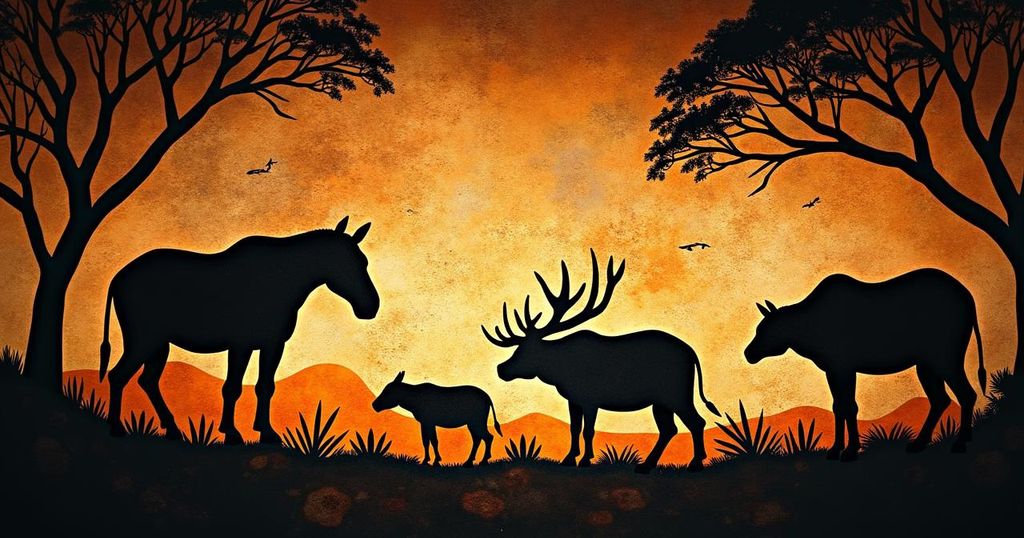Discovery of Ancient Rock Art in the Amazon Reveals Coexistence with Ice Age Creatures

Researchers have discovered ancient rock art in the Amazon rainforest that depicts early inhabitants living with Ice Age creatures, created between 11,800 and 12,600 years ago. The paintings, found in Colombia, illustrate extinct animals such as mastodons and giant sloths, as well as hunting scenes and human figures, contributing to one of the largest collections of rock art in South America, revealing insights into early human life during a time of significant environmental change.
Recent discoveries in the Amazon rainforest reveal prehistoric rock art that represents the earliest inhabitants coexisting with colossal Ice Age animals. Estimated to have been created between 11,800 and 12,600 years ago, these remarkable paintings were uncovered in three rock shelters located in the northern Colombian Amazon. Although excavations occurred during 2017 and 2018, findings are now being published, providing new insights into this period. The rock art features a range of depictions, including extinct species such as mastodons, giant sloths, and Ice Age horses. In addition to animal representations, the collection encompasses geometric shapes, human figures, handprints, and imagery of hunting scenes, as well as various fauna, including snakes and birds. Researchers situated this collection of red paintings, crafted from ochre pigments, among the largest of its kind discovered in South America. This groundbreaking research was conducted by scholars from the National University of Colombia, the University of Antioquia, and the University of Exeter in the United Kingdom. According to José Iriarte of the University of Exeter, “The pictures show how people would have lived amongst giant, now extinct, animals, which they hunted.” His colleague, Mark Robinson, remarked, “They moved into the region at a time of extreme climate change, which was leading to changes in vegetation and the make-up of the forest. The Amazon was still transforming into the tropical forest we recognise today.”
The Amazon rainforest is home to an astonishing variety of ecosystems and historical artifacts, particularly regarding the ancient human civilizations that once inhabited this vast region. Rock art serves as a significant archaeological resource, offering insights into prehistoric life and the interactions between humans and their environment. This recent discovery points to a time just before the Holocene era, marking a critical juncture when both climate change and human innovation were transforming the landscape. The findings suggest that early inhabitants not only adapted to their surroundings but also engaged with the formidable wildlife that existed during the Ice Age.
The recent discovery of ancient rock art in the Amazon rainforest provides compelling evidence of early human life alongside extinct Ice Age animals. This significant collection of paintings, which has been scientifically dated between 11,800 and 12,600 years ago, unveils a vivid portrayal of human-animal interactions during a transformative climatic period in the region’s history. Such findings not only enhance our understanding of prehistoric societies but also underscore the impact of climate change on biodiversity and human settlement patterns.
Original Source: www.bbc.com








